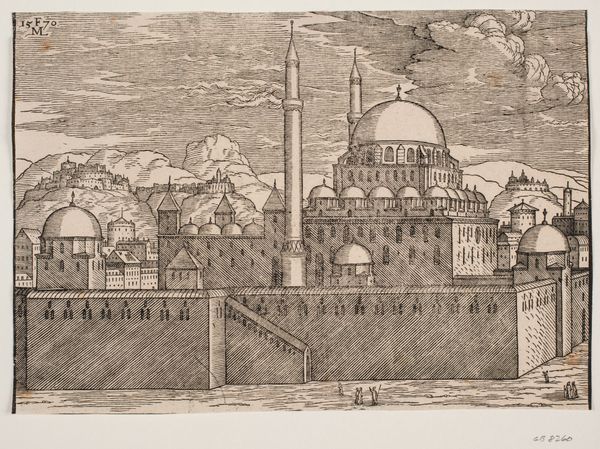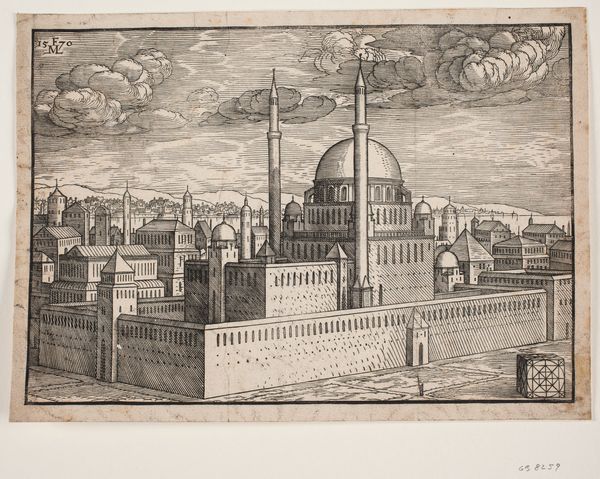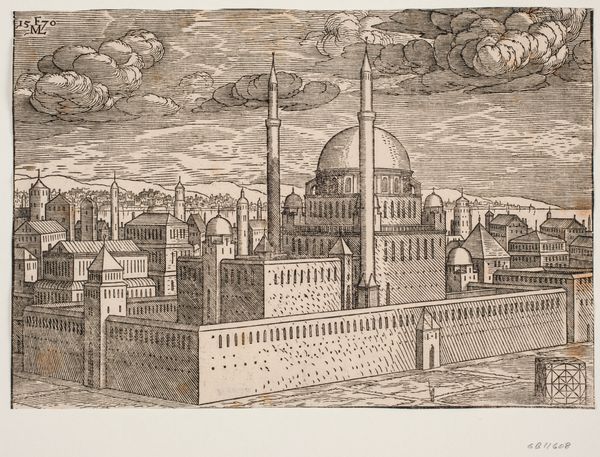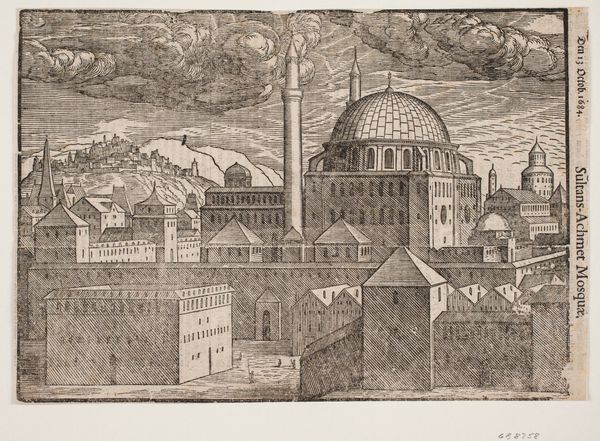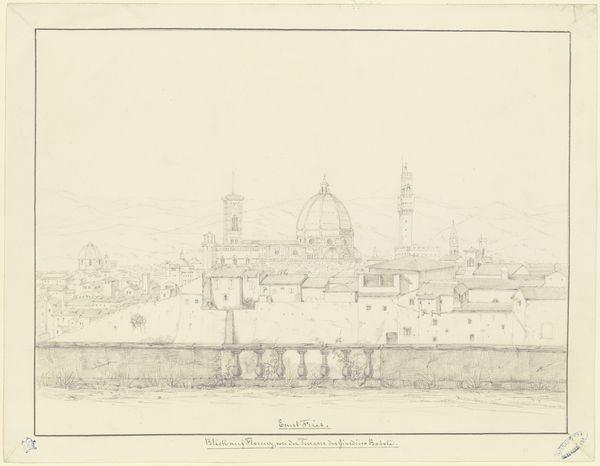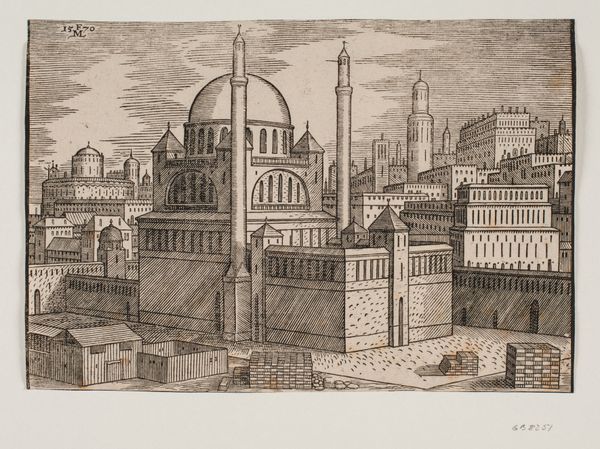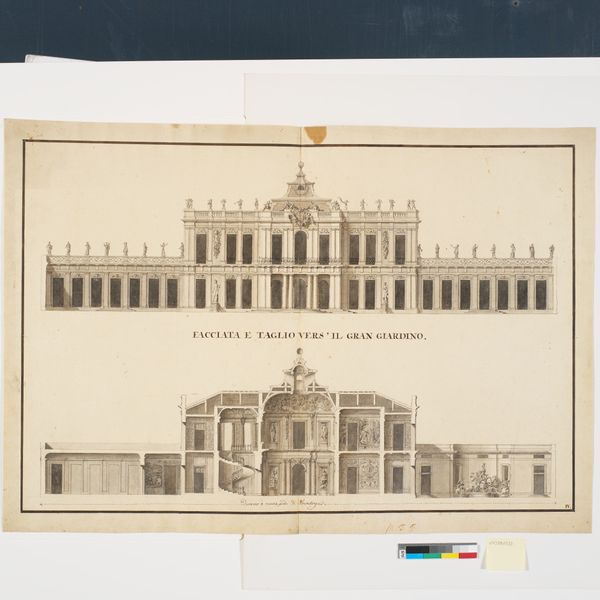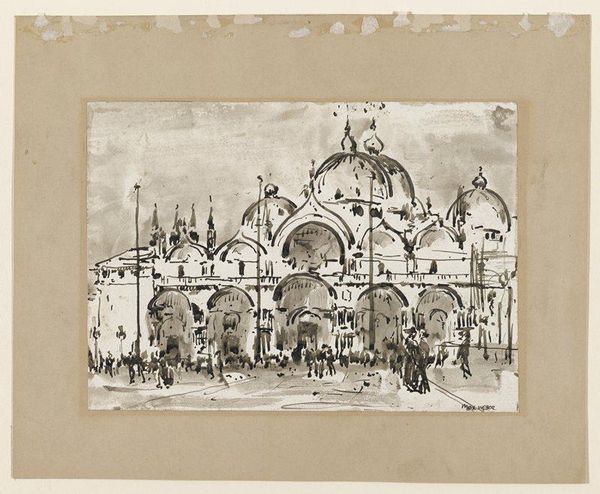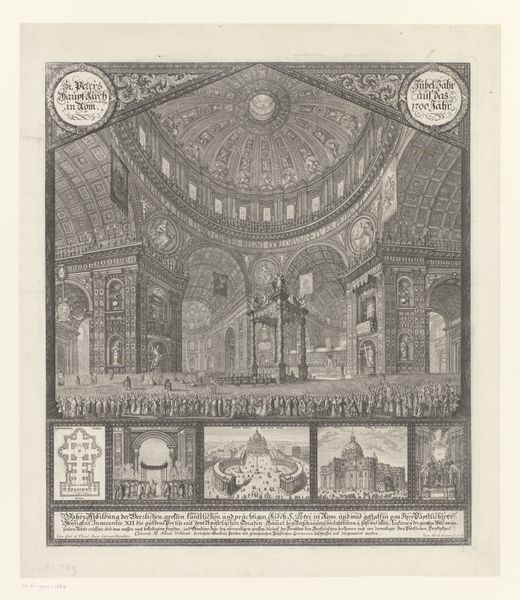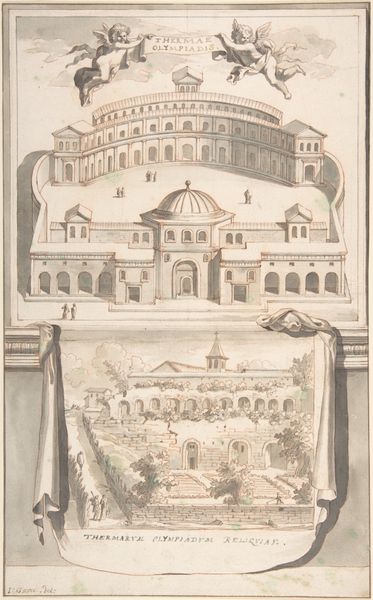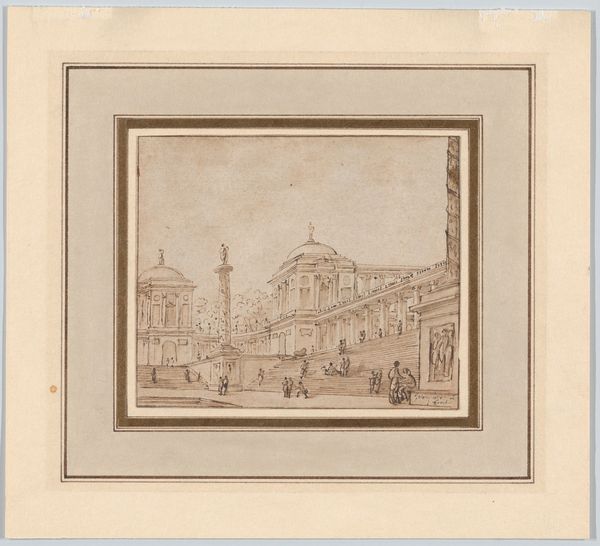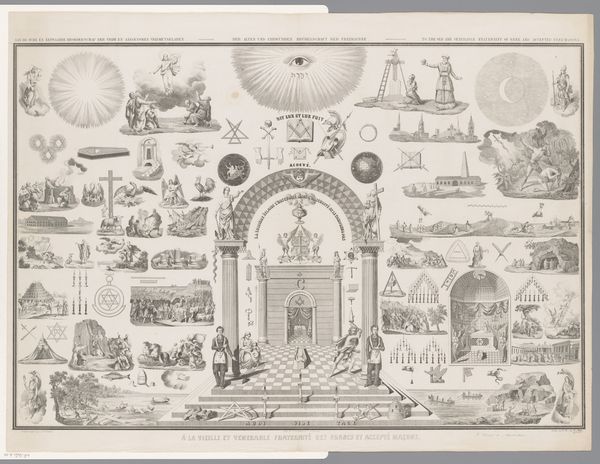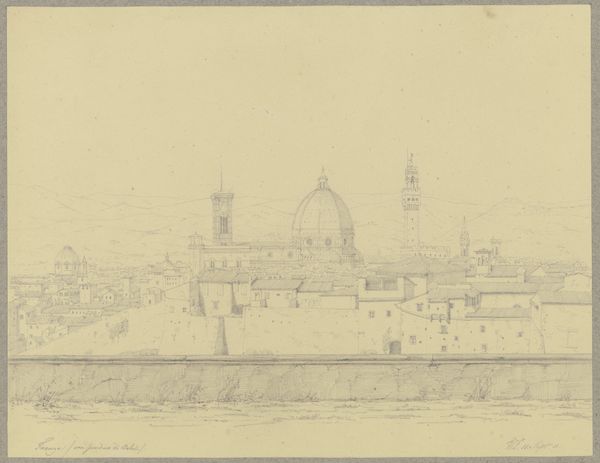
print, woodcut, engraving, architecture
# print
#
landscape
#
woodcut
#
cityscape
#
islamic-art
#
engraving
#
architecture
Dimensions: 184 mm (height) x 506 mm (width) (bladmaal)
Curator: Here we have Melchior Lorck's "The Suleimanyie Mosque, Seen from North East," an engraving created around 1570. Editor: It has a foreboding, almost apocalyptic atmosphere, wouldn't you say? The sky seems to churn with unrest. Curator: Absolutely. Lorck masterfully employs the graphic qualities of the medium to create a palpable sense of dramatic tension. Notice the meticulous rendering of architectural detail in the mosque itself, sharply juxtaposed against the tempestuous skies. The contrast draws the eye in, creating visual interest across the cityscape. Editor: Considering the historical context, I see the portrayal of the Suleimanyie Mosque not just as a structural marvel, but as a symbol of Ottoman power and its interaction with the European gaze during a time of considerable political and religious strife. Lorck, a European artist working within the Ottoman Empire, offers us a complex visual record of cultural exchange and negotiation. Curator: The composition itself presents an interesting interplay between structure and fluidity. The precise lines delineating the architecture speak to the order and rationality that underpinned the construction, contrasted against the swirling cloud formations which seem to defy any containment, destabilizing any assumed permanence. Editor: I would also like to examine this instability in terms of social justice and the position of Lorck himself. The imposing architectural statement also masks issues of labour, trade routes, religious tensions—factors that would be implicitly understood and felt by viewers of the time. How does Lorck's outsider perspective potentially gloss over the lived realities within this empire, even as he celebrates its architectural achievements? Curator: An insightful consideration. The brilliance here resides in Lorck’s handling of perspective and tone, generating an incredibly intricate rendering that still translates powerfully. I remain moved by his skillful control of engraving. Editor: A powerful example of visual rhetoric from an era defined by encounters and collisions. It provokes consideration of whose stories get represented and how art intersects with the narratives of global power.
Comments
No comments
Be the first to comment and join the conversation on the ultimate creative platform.
